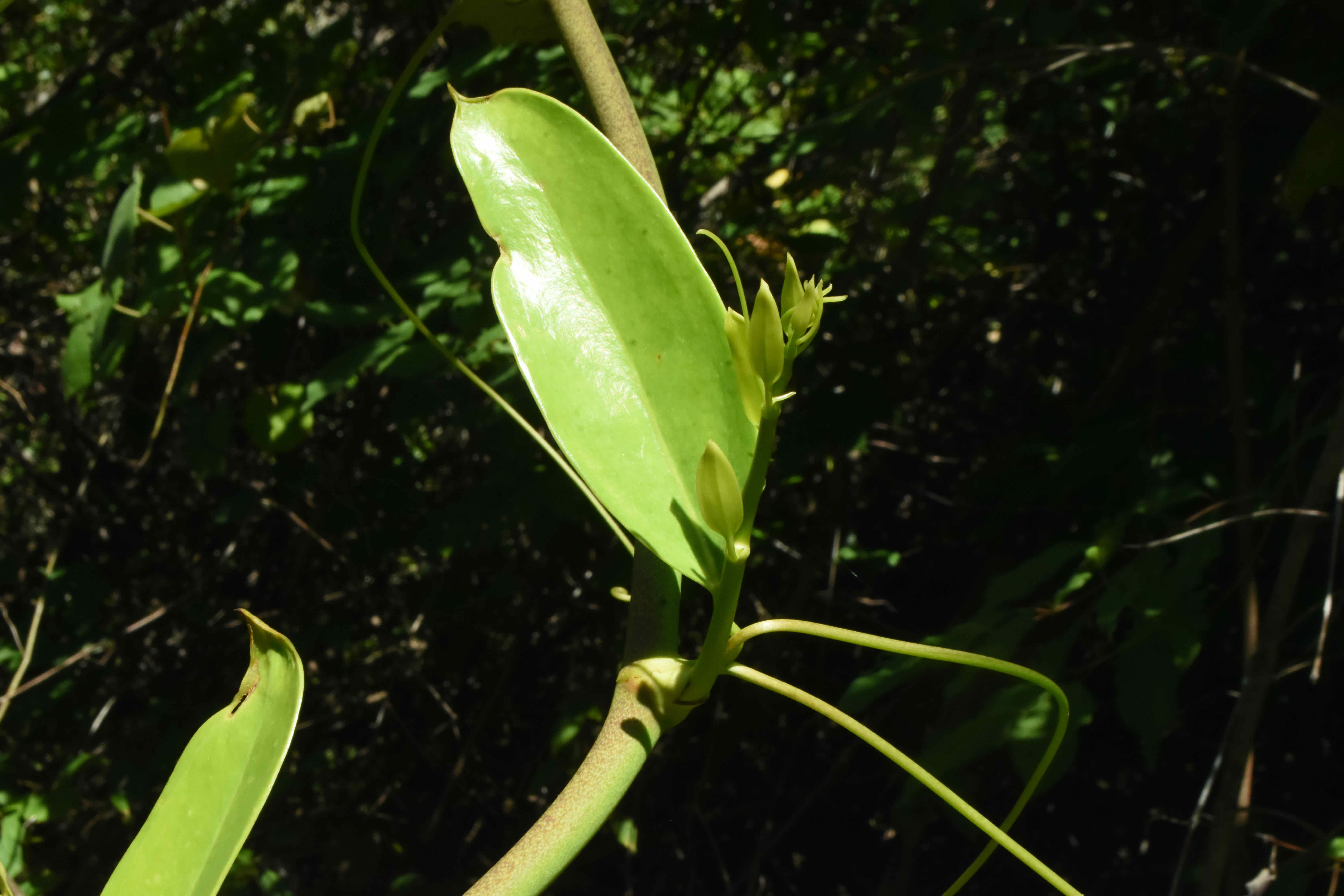
Laurel greenbrier, photographed at Fakahatchee Strand Preserve State Park, Copeland, Collier County, in May 2022.
There is no shortage of things in the wilds of Florida that make it difficult to walk from Point A to Point B. We have dense shrubs like the aptly named fetterbush and staggerbush, and armed menaces like saw palmetto, sensitive briar and pricklypear cactus.
Add to the list laurel greenbrier, Smilax laurifolia, a woody, prickly vine found almost everywhere in Florida sans the Keys and a scattered handful of counties. It is a perennial and a native of the Sunshine State and most of the southeastern United States, from Virginia to Texas. It’s also native to the Bahamas and Cuba.
Laurel greenbrier climbs and clambers atop shrubs and small trees, attaching itself via coily apendages called tendrils and forming mats. Its prickles help defend the plant against grazing animals but also help it attach itself to other plants. Even dead, it persists on its hosts, adding its tangles to already nearly impenetrable masses of vegetation.
Laurel greenbrier is one of 12 greenbrier species (genus Smilax) found in Florida, and among the more abundant. Most species are fairly similar to each other, but laurel leaf stands out in several ways.
The first is its habitat. Laurel greenbrier likes it wet, or at least very moist, and is typically found in the edges of swamps, bay heads and shaded forests as opposed to drier places like scrubs and flatwoods. The undersides of the leaves have three main veins, but only the middle one will be prominent; the other two might not be visible at all. The petiole, or leaf stem, tend to be reddish, and the leaves themselves pointed upward.
Like most greenbriers, laurel greenbrier has thorns along its stem, particularly along older sections. They can be numerous, so much so that we’ve seen it described as “viciously armed.”
The leaves are lance-shaped, leathery to the touch; the apex can be rounded or come to a point. It is an evergreen.
Laurel greenbrier flowers year-round in Florida. They appear in loose clusters called umbels that emerge from the leaf axil — the point where the leaf meets the stem. The flowers are white and aromatic, eventually giving way to small green berries that ripen the second season after setting and turn a shiny black.
But the engine that drives laurel greenbrier is below ground — large, tuberous rhizomes, or underground stems. While laurel greenbrier reproduces by seed, the major way it produces new plants, suckers if you will, is through the rhizomes. The energy they store also help fuel laurel greenbrier’s explosive growth rate — as much as two-and-a-half inches a day.
That fast growth rate can make laurel greenbrier a pest in some circumstances but useful in others, especially in natural restorations.
Native Americans had a variety of uses for laurel greenbrier. The Cherokee used the root to make a wash to treat sores and burns, and to make a tonic. The Choctaw pounded and fried the rhizome as a cake; they also dried and ground the roots into a flour to make bread. The Houma of Louisiana used it to treat urinary problems, while the Seminole made a dye of it.
Laurel greenbrier is also known as laurelleaf greenbrier, laurel-leaf greenbrier, catbrier and bamboo vine. It is a member of Smilacaceae, the greenbrier family.



